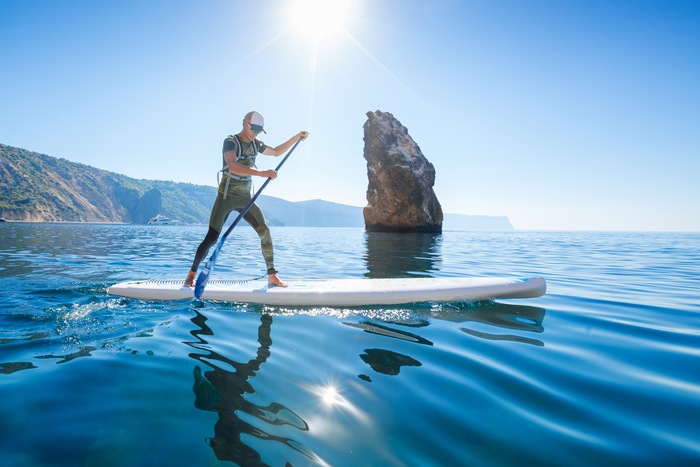When Stand Up Paddle Boarding Gets Extreme

For those who love to spice up their time on the water, there’s a way to turn everything—from fishing to swimming to kayaking—into a truly extreme adventure. Stand up paddle boarding is no exception!
This traditionally tranquil sport—which gives participants a chance to put their sea legs to the test while paddling through winding waterways—is already a favorite among many water enthusiasts. In today’s blog, however, we’re taking a look at the extreme side of the sport—the side that puts boarders into waves, fast-moving streams, and otherwise inaccessible on-the-water escapes.
A new kind of surfing
Who says surfing has to be hands-free? Many oceanic innovators are conquering monster waves with a paddle!
Perhaps not surprisingly, the traditionally long form of a paddle board makes it a little easier to catch larger waves—the kind you’re always searching for. While the paddle board may not make surfing easier, and the hybrid sport still requires strong know-how of both surfing and SUP (or stand up paddle boarding), we think it makes for the perfect next step on your water sports journey.
Your new favorite whitewater alternative
It’s not just ocean waves that can be conquered on your paddle board. Some use their boards to travel along whitewater rapids, too, since this mode of transportation offers an entirely different experience than kayaking or rafting through the rapids. In fact, it might be exciting to revisit the whitewater spots you’ve already mastered from this new vessel. You’ll be in awe as class I, II, or III (i.e. lower difficulty) rapids suddenly become fresh, exciting, and newly challenging. This is, of course, a great opportunity for inland adventurers who may not have access to an ocean or large body of water nearby—but who still want to experience the rush of paddle boarding all the same.
Practice runs on the wake
Looking for ways to improve your paddle board skills—to the point that you can master waves, rapids, and other rough water? A great place to start is behind the wake of your own boat. As someone else navigates, you can gently paddle behind and learn to handle wakes of varying intensities. Once you work your way up to faster speeds, you can progress and move onto bigger adventures on the water—with your paddle board in tow!
We hope that today’s blog has sparked a newfound passion for stand up paddle boarding as you’ve never seen it before. The only thing left to do now? Try it out for yourself!
Bookmark & Share
Previous Article
Next Article
